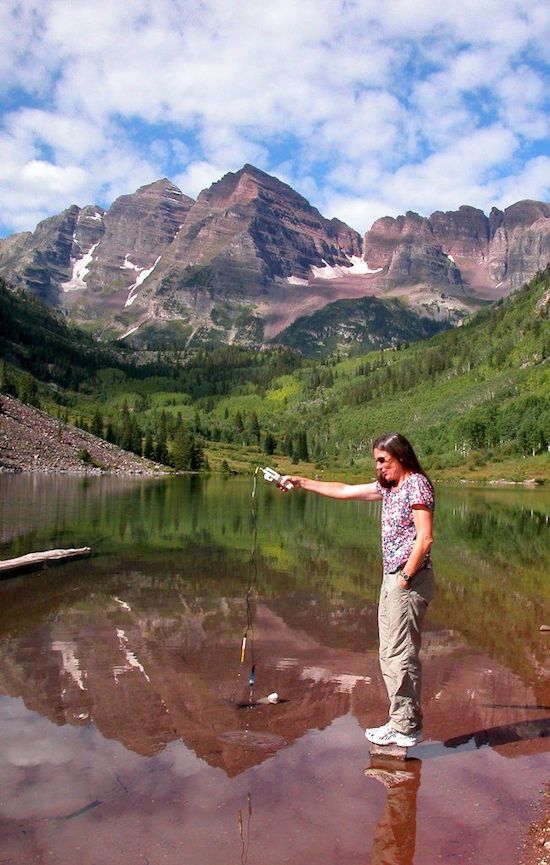STEM Shoutout: Dr. Laura Crossey
Long-time UNM professor wades in to water quality studies over the years
Dr. Laura Crossey is no stranger to the vast world of geology and has been improving the University of New Mexico with her research and presence for 34 years. Having almost continuous funding over the duration of her career from several different institutions including the National Science Foundation, Crossey has conducted some of her research continually for 20 years.
Crossey last year took a research trip to Tibet, and now those results from Tibetan thermal springs are being analyzed. Crossey hopes that the results from this research will give more insight into the collision between Asia and India by using geothermal water and gases as a probe to see what is occurring deep beneath the surface of the earth.
The importance of springs and groundwater is being examined in Crossey’s future project concerning how boron reacts in clays to help facilitate the precursors of life. This importance of springs is also delineated in Crossey’s ongoing research in the Sandia Mountains and the Valles Caldera.
“My students and I are doing work with hydrology and water quality. The water quality project for the Forest Service involves looking at the water quality and sustainability of springs and the wetlands derived from them. If you consider the Sandia Mountains, which are right next to Albuquerque, there isn’t actually a perennial stream that runs off of the Sandias and makes its way to a major river. Instead, this water soaks in, becomes a part of the groundwater that re-supplies both the Albuquerque basin and the communities on the east side of the Sandias. So people are always concerned, especially as the conditions are changing and drought seems to be persisting, about the sustainability of their groundwater resources. Understanding springs is a big help to that.” Crossey said.
Using sensors, Crossey and her students are able to monitor water quality, even if the area is closed to factors beyond their control, like fire danger.
“My students are monitoring the water instrumentation that’s in place. It’s pretty hard to monitor water because you can’t get a sample every time it rains. But, you can put a sensor in the water to tell you how it is dynamically changing. So, we have sensors in the springs and streams in the Valles Caldera that are taking readings every 15 minutes, and then we periodically go and download the data and interpret it and match the data with changes in physical water samples that we collect less frequently,” Crossey said.
Why is the monitoring of springs so important? Some agencies that exploit the earth’s natural resources aren’t farsighted enough to obtain samples from springs as baseline data to refer back to when looking at the consequences of groundwater withdrawal or changes in climate status in a particular area.
“You need to have some background research to show what the baseline was before pumping or climate change begins. Without this baseline data, some may argue that it’s just the way it was before any external influence came into play. So you need to have these baselines to compare to in the future,” Crossey said.

